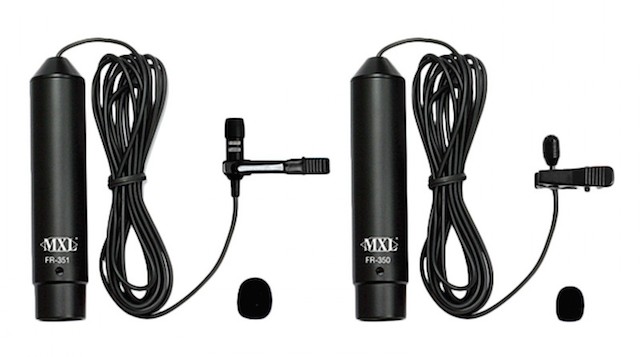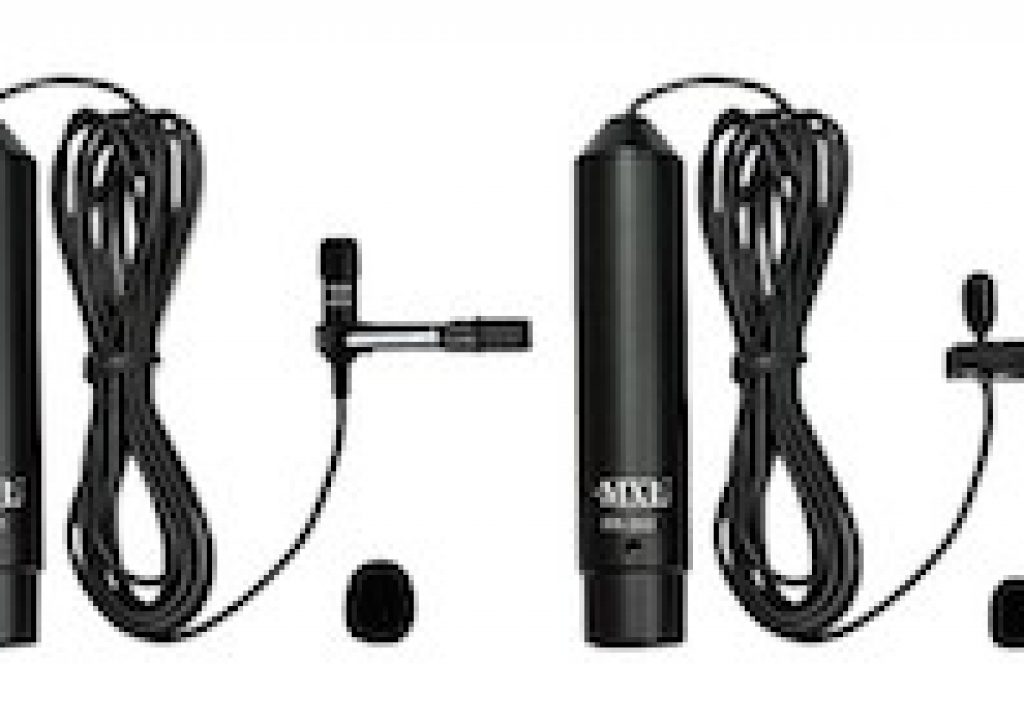
If you have ever priced lavalier microphones with balanced XLR connections, you know that they typically cost upwards of US$150 each, and sometimes can cost more than double that price. However, my friend María found a package deal where she was able to receive not one, but two balanced XLR lavalier microphones for well under US$100, which means that each mic cost less than US$50. Ahead you’ll get to hear four recorded tests and make your own conclusion about the quality.
Understanding the category of microphone
Almost all of our readers will be familiar with lavalier microphones, sometimes called lapel microphones. However, some may not quite be familiar with the specific category of balanced XLR. These more expensive models are generally used either when connected directly to a professional camera whose inputs is balanced XLR, or when multiple microphones are combined with a mixer. The main advantage of balanced audio is that it rejects noise much better than unbalanced audio, especially at the lower microphone level, and especially at longer distances. Balanced audio is a way where audio is sent from one device to another in such a way that the signal is sent over two conductors (often twisted together, and often with a shield or braid as an independent ground) with matching impedance at the source and destination. The signal sent on each conductor is inverted in polarity. (Star Trek TNG fans: this technique was not invented by Geordi La Forge, although I’m sure he must appreciate its technique and benefits.) The balanced audio circuit is designed to measure the difference in voltage between the two conductors. Thankfully, electromagnetic interference will cause an equal noise voltage on each conductor, so the interference on each will cancel out, leaving only the original signal without the noise.
This is in contrast with other unbalanced lavalier microphones that terminate in something other than an XLR and often cost much less. Two examples are the SmartLav and the new SmartLav+ from RØDE, both of which terminate in 3.5 mm TRRS for smartphones and tablets, whose inputs are unbalanced anyway, and the cable is very short. But this particular article is about an unusually inexpensive pair of balanced XLR microphones, for those cases when that’s the type you need.
The MXL FR–355K kit and its contents
The kit María bought is the MXL FR–355K Dual Lav Interview Kit. She bought it from Amazon for under US$100 for the pair. At publication time of this article, the kit is only US$75, meaning that each mic currently costs US$37.50 in the package. I found it unusual, but the kit is only available with the combination of one omnidirectional (FR–350 with a 6mm capsule) and one cardioid (FR–351 with a 8mm capsule). Both terminate with balanced XLR plugs, and both require 48-volt phantom power. I know, you might initially cry and say that you would prefer to purchase the kit with two of the omnis or two of the cardioids… but even if you had to buy two of the kits to reach your goal, the price is very low, since you’d get two of your preferred style mic for US$150, and have two mics of the other type, either to sell or to keep as spares.
Test recordings
I tested each microphone by recording at 48 kHz (the absolute standard for digital audio for digital video) two different ways each: once with the original iRig Pre plugged into the TRRS input of a 4th–generation iPad, and the other via the iRig Pro (to be reviewed soon). So with the iRig Pre, the iPad’s own A>D (analog-to-digital) converter was used, and with the iRig Pro, the iPad’s A>D converter was bypassed completely. The app we used to record was RØDE Rec, which I reviewed in January 2014. The location was indoors, with central air conditioning, and in all cases, the lavalier mics were clipped to my shirt at mid chest. No equalization or compression was used, only normalization.
How did they sound to you/me?
To me, the cleanest recording was via the FR–351 cardioid, recorded through the iRig Pro, which was dramatically cleaner than the one made with the original iRig Pre. (I’ll be publishing my review on the iRig Pro very soon.)
Thanks to María
Thanks to María Kowalski of LaMusa.tv for the use of her MXL microphones for this test.
Upcoming articles, reviews, and books
Soon I’ll be publishing reviews on the iRig Pro preamp/A>D/MIDI interface from IK Multimedia and a separate ones on microphones never previously covered by me. Stand by for upcoming articles, reviews, and books. Sign up to my free mailing list by clicking here.
Si deseas suscribirte a mi lista en castellano, visita aquí. Si prefieres, puedes suscribirte a ambas listas (castellano e inglés).
My latest book (paperback + ebook)
My most recent book is available in two languages, and in paperback as well as an ebook. The ebook format is Kindle, but even if you don’t have a Kindle device, you can read Kindle books on many other devices using a free Kindle app. That includes iPad, Android tablets, Mac computers, and Windows computers. Although generally speaking, Kindle books are readable on smartphones like Androids and iPhones, I don’t recommend it for this particular book since it contains both color photos and color comparison charts. The ebook is also DRM-free.
In English:
In English, it is currently available in the following Amazon stores, depending upon your region:
- Amazon.com, for the US and other countries in the Americas that don’t currently have their own Amazon store, or anywhere if you simply prefer it
- Amazon.br for Brazil
- Amazon.ca for Canada
- Amazon.de for Germany
- Amazon.es for Spain pero a lo mejor lo preferirás en castellano, a continuación)
- Amazon.fr for France
- Amazon.in for India
- Amazon.it for Italy
- Amazon.co.jp for Japan
- Amazon.com.mx for México
- Amazon.co.uk for the United Kingdom
Or in your favorite bookstore by requesting ISBN–10: 1456310232 or ISBN–13: 978–1456310233.
En castellano:
En castellano, está disponible actualmente en las siguientes tiendas Amazon, según tu región:
- Amazon.com para EE.UU. y todas las Américas donde no existe ninguna tienda particular… o en cualquier parte si simplemente lo prefieres
- Amazon.com.br para Brasil
- Amazon.co.jp para Japón
- Amazon.de para Alemania
- Amazon.es para España
- Amazon.fr (Francia)
- Amazon.in para India
- Amazon.it para Italia
- Amazon.com.mx para México
- Amazon.co.uk para el Reino Unido
o en tu librería preferida al solicitar el ISBN–10: 1492783390 ó el ISBN–13: 978–1492783398.
Allan Tépper’s other books, consulting, articles, seminars & audio programs
Contact Allan Tépper for consulting, or find a full listing of his books, articles and upcoming seminars and webinars at AllanTepper.com. Listen to his TecnoTur program, which is now available both in Castilian (aka “Spanish”) and in English, free of charge. Search for TecnoTur in iTunes or visit TecnoTur.us for more information.
FTC disclosure
No manufacturer is specifically paying Allan Tépper or TecnoTur LLC to write this article or the mentioned books. Some of the other manufacturers listed above have contracted Tépper and/or TecnoTur LLC to carry out consulting and/or translations/localizations/transcreations. Many of the manufacturers listed above have sent Allan Tépper review units. So far, none of the manufacturers listed above is/are sponsors of the TecnoTur programs, although they are welcome to do so, and some are, may be (or may have been) sponsors of ProVideo Coalition magazine. Some links to third parties listed in this article and/or on this web page may indirectly benefit TecnoTur LLC via affiliate programs.
Copyright and use of this article
The articles contained in the TecnoTur channel in ProVideo Coalition magazine are copyright Allan Tépper/TecnoTur LLC, except where otherwise attributed. Unauthorized use is prohibited without prior approval, except for short quotes which link back to this page, which are encouraged!


